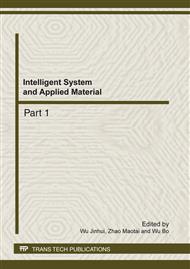p.804
p.809
p.814
p.819
p.824
p.829
p.834
p.839
p.844
Numerical Simulation of Solid-Liquid Multiphase Flow in Horizontal Flexural Pipes
Abstract:
We need to hold flow characteristic for water- and/or oil-sediments, with low-middle volume fraction of the particles in horizontal flexural pipes, in order to design logging tool and build interpretation methods for the producing profile. To achieve this, we built governing equations and boundary conditions for the water- and/or oil-sediments based on the mixture algebraic slip model (MASM), and gained numerical solution by the finite difference method and the successive over relaxation. 3-D simulation results in flexural horizontal pipes indicated that volume of oil is obviously greater than that of water in the downhill but opposite in upgrade. When the velocity in the entrance is small enough, “die oil” perhaps presents at top of the borehole in downhill. Moreover, this entrance velocity arisen “die oil” is increasing with height of interface. The volume of deposited particle in lowest location is reducing with increasing the entrance velocity when the entrance velocity is small and increasing with the entrance velocity when the entrance velocity is large, and slant surface of deposited particle volume is gradually emerged. This is due that deposited particles are hiked once again and carried forward when the flow velocity is greater than incipient velocity for a particle size.
Info:
Periodical:
Pages:
824-828
Citation:
Online since:
February 2012
Authors:
Price:
Сopyright:
© 2012 Trans Tech Publications Ltd. All Rights Reserved
Share:
Citation:


